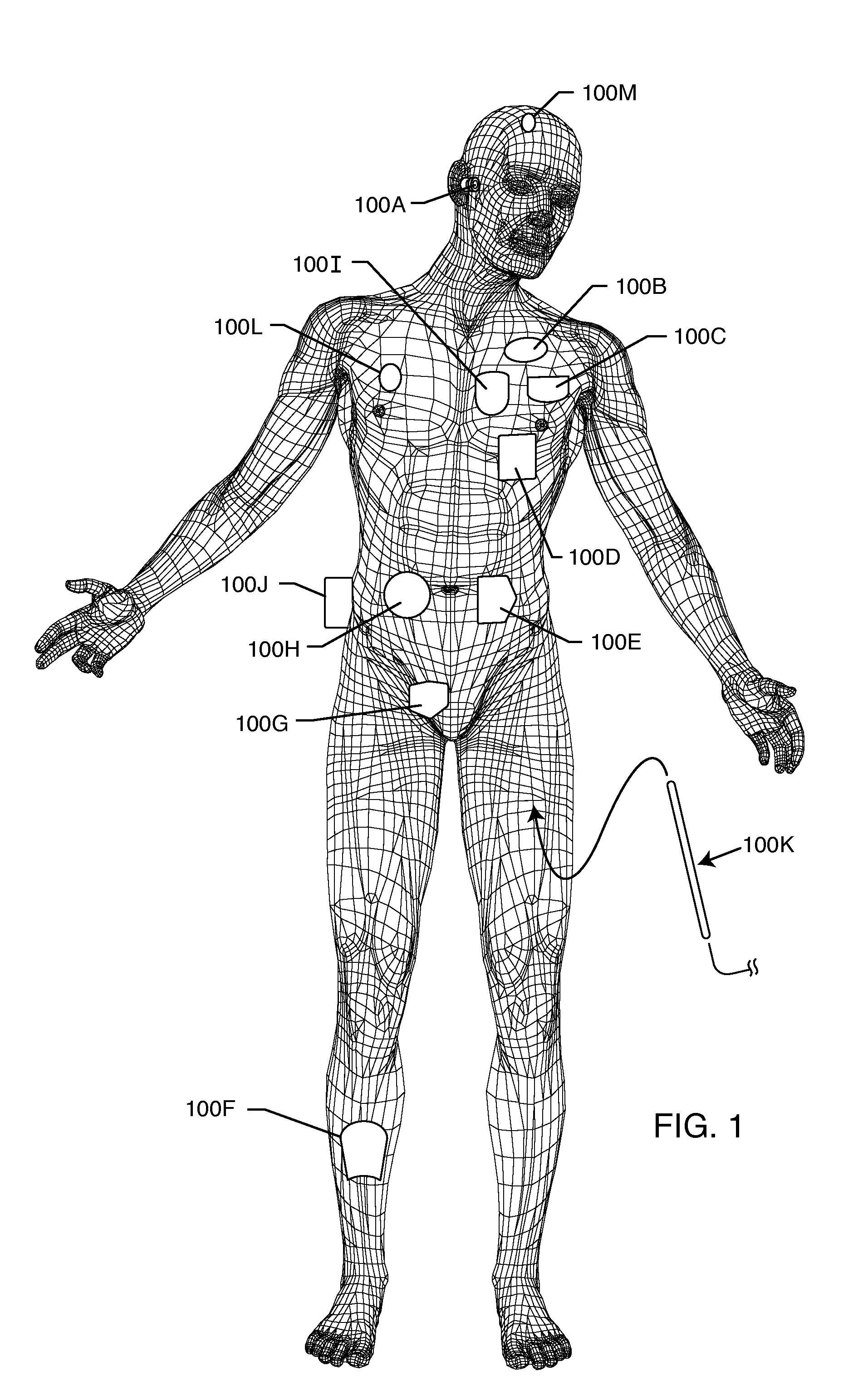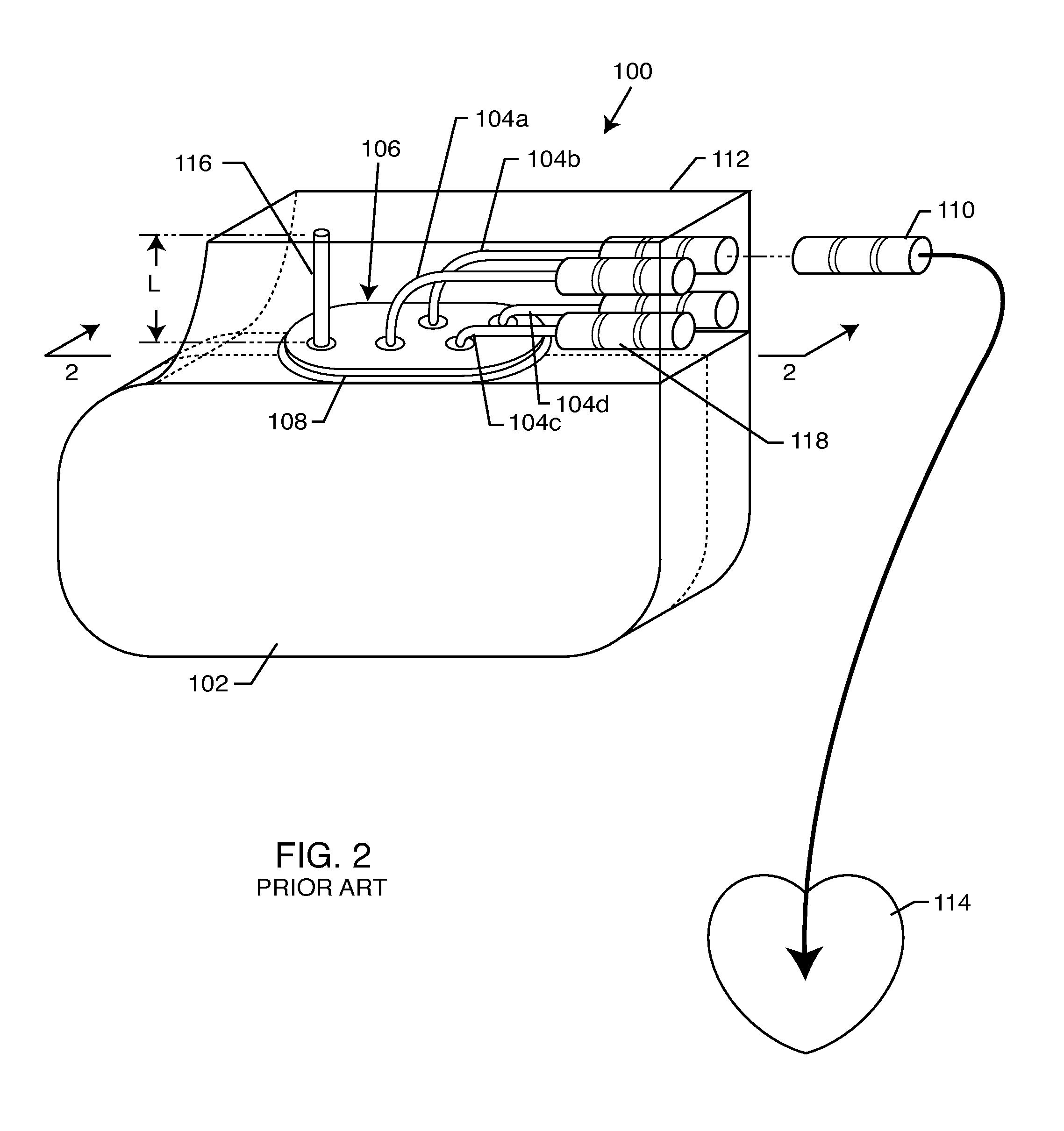Multiplexer for selection of an MRI compatible band stop filter or switch placed in series with a particular therapy electrode of an active implantable medical device
a technology of a multi-channel switch and a therapy electrode, which is applied in the direction of implantable neurostimulators, internal electrodes, therapy, etc., can solve the problems of dangerous arrhythmias, false detection of ventricular tacchyarrhythmia, and inability to operate properly
- Summary
- Abstract
- Description
- Claims
- Application Information
AI Technical Summary
Benefits of technology
Problems solved by technology
Method used
Image
Examples
Embodiment Construction
[0094]As shown in the drawings for purposes of illustration, the present invention resides in the placement of electronically activated switches, including MEMS switches, in series with lead wires or circuits of active medical devices to protect the patient and / or medical device from undesirable electromagnetic interference signals, such as those generated during MRI and other medical procedures. The present invention also resides in the design, manufacturing, and installation of such electronic switches to be used in the lead wires, inside the active implantable medical device itself or at or in conjunction with a distal tip electrode of AIMDs. As will be explained more fully herein, the invention is applicable to a wide range of external medical devices, probes, catheters, monitoring lead wires and the like that may be temporarily inserted onto a patient or that a patient may be wearing or connected to during medical diagnostic procedures, such as MRI.
[0095]Another need which resi...
PUM
 Login to View More
Login to View More Abstract
Description
Claims
Application Information
 Login to View More
Login to View More - R&D
- Intellectual Property
- Life Sciences
- Materials
- Tech Scout
- Unparalleled Data Quality
- Higher Quality Content
- 60% Fewer Hallucinations
Browse by: Latest US Patents, China's latest patents, Technical Efficacy Thesaurus, Application Domain, Technology Topic, Popular Technical Reports.
© 2025 PatSnap. All rights reserved.Legal|Privacy policy|Modern Slavery Act Transparency Statement|Sitemap|About US| Contact US: help@patsnap.com



